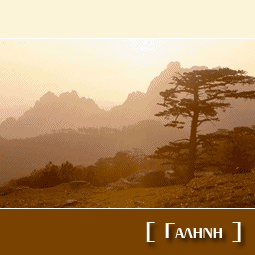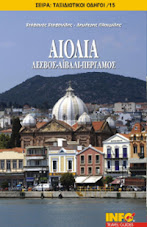MEXICO CITY - Perhaps better known for impossible traffic, kidnappings and some of the world's worst air, Mexico's sprawling capital of 20 million seems like the last place you would go for natural splendor and pristine wilderness.
But with snowcapped volcanos, alpine meadows, deep pine woods and tropical forests all within two hours, the city has enough base camp potential to make a Yellowstone park ranger blush.
For travelers feeling smothered by Mexico City's claustrophobic chaos, fresh air and wide-open spaces are not far away.
If you are adventurous, and have a smattering of Spanish, ask your hotel or hostel to help you figure out the city's complicated but cheap subway and bus network.
Alternatively, hire a taxi for the day. But beware that street cabs can be dangerous. Although more expensive, it's best to take a cab that is either registered with the hotel or waiting at a cab stand.
Tepozteco
An hour south of the city, this relatively small mountain is a piece of cake to find: Take a bus to the village of Tepoztlan and walk straight down the main street until it turns into a trail and begins snaking up the mountainside.
At its summit, Tepozteco is slightly lower in elevation than Mexico City; it would require little or no acclimatization if not for its surprising steepness. The rocky trail ascends an abrupt 1,200 feet in less than a mile. Tall rock spires covered in vegetation jut dramatically up from the slopes.
The hike is a fun scramble. But the real reward is at the summit, which is home to what may be Mexico's most curious archaeological site: a 30-foot-high pyramid that dates back to the 12th century. After huffing and puffing up the mountain, nothing feels better than sitting atop the sun-drenched pyramid with your feet hanging off, eating a snack and soaking in the breathtaking view of the valley below.
Getting to Tepozteco: Go to the Terminal Sur bus station at the Tasquena metro stop. Take a bus to Tepoztlan and walk up to the trailhead.
Desierto De Los Leones National Park
Tucked away in the mountainous western corner of Mexico City's Federal District, this park is as attractive for its cultural and historical significance as it is for its rugged topography and vast forest of towering, old-growth conifers.
A view of the Nevado de Toluca, a massive, extinct volcano that is Mexico's fourth-highest mountain, near the city of Toluca, Mexico. For travelers feeling smothered in the claustrophobic chaos that Mexico City can sometimes be, fresh air and wide-open spaces are just a bus or taxi ride away.
Desierto de los Leones has been a place of retreat for Mexicans since Carmelite monks built a monastery there almost 400 years ago, and its deep woods serve as an important carbon lung for the smoggy city below.
Still standing, the monastery is open to the public and is easily found at the park's main parking area and entrance, at an altitude of around 9,500 feet. Desierto de los Leones is a popular escape for Mexico City families; any taxi driver will know how to get there.
Starting at the parking area, walk downhill until you reach a small river and a mill pond. From there, pick one of the countless trails that branch off the main path along the river and start exploring. The small, crumbling houses you might stumble upon are hermitages built hundreds of years ago by the monks.
Despite its relatively high altitude — most of the park lies above 10,000 feet — Desierto de los Leones offers easy and moderate trails suitable for all ability levels. On the other hand, Cerro San Miguel, the park's highest peak, stands at over 12,400 feet and could be a challenge.
Before heading back to town, be sure to order a hot chocolate at the restaurant adjacent to the parking area.
Getting to Desierto de los Leones: A taxi from your hotel is easiest, or take the metro to Barranca del Muerto and go by cab from there.
Paso De Cortes
Located on the saddle between Mexico's famous twin volcanos, Popocatepetl and Iztaccihuatl, this high mountain pass is where Spanish conqueror Hernan Cortes first laid eyes on the Valley of Mexico.
To get to Paso de Cortes from Mexico City, take a two-hour bus to the village of Amecameca and then catch a cab on the street; the driver will know where to go.
The pass is 12,000 feet above sea level, and you are sure to feel the altitude. "Popo" and "Izta," as the volcanos are commonly called, are Mexico's second- and third-highest peaks, respectively, at 17,802 feet and 17,158 feet. On a clear day, the view from the saddle is magnificent.
The trails and dirt roads that branch off from the pass meander through gently rolling hills and golden alpine meadows, while snow glistens on the glaciated volcanos above.
If you are looking for a more challenging hike, ask to be taken to La Joya, at the foot of Izta, where serious climbers embark on summit attempts. It is 1,000 feet higher than Paso de Cortes and about 4 miles away.
From La Joya, depending on the time of year, you might be able to reach the snow line if you are in good shape and get an early start. Do not try to go higher. While Popo is closed to the public due to a cycle of volcanic activity that began in 1994, Izta's summit is open and, unfortunately, claims lives every year. Previous mountaineering experience, proper equipment (ropes, crampons, ice axes, etc.) and a knowledgeable guide are absolute prerequisites for a summit bid.
Getting to Paso de Cortes: Go to the TAPO bus station at the San Lazaro metro stop. Take the bus to the town of Amecameca, and take a taxi from there.
Cumbres Del Ajusco National Park
Occupying at least one third of the Federal District, the Ajusco mountain range easily makes up the largest expanse of wilderness in the immediate vicinity of Mexico City, although ever-growing suburbs are climbing higher and higher.
Still, the 12,894-foot summit of Cerro Ajusco — the park's tallest peak — has a quiet and isolated feel.
Several trails crisscross the park, but the summit is easy enough to find: Just go up. You will begin hiking through a thick pine forest on Ajusco's steep lower slopes before breaking the treeline. From there, whatever trail you are on will gravitate toward the nearest ridge and lead you to the summit.
Story continues below vadvertisement
Ajusco is best climbed on a clear, sunny day, when you will be able to see the surrounding countryside, Mexico City to the north and perhaps Izta and Popo to the southeast.
Getting to Ajusco: Take a taxi from your hotel, or take the metro to the Universidad stop, on the south end of Line 3. Buses will be waiting outside, and their drivers can give you further instructions. You will eventually have to take a taxi to the trailhead.
Nevado De Toluca
Mexico's fourth-highest mountain, the Nevado de Toluca is a massive, extinct volcano that looms tall and lonesome over the valley below.
It is Mexico's most accessible major peak, with a dirt road that winds up its slopes, above the treeline and right into its gaping caldera at about 13,800 feet above sea level.
The best way to get to Nevado de Toluca is to take a bus to the city of Toluca, at the foot of the mountain, and from there either rent a car or take a taxi the remaining distance.
Once on the mountain, you may either explore the moonlike landscape of the caldera and its two cold, turquoise lakes, or climb to the summit, which at 15,354 feet is higher than any peak in the United States outside of Alaska.
Mexico City life
Take a virtual tour of one of the world’s largest cities.
While mantled with snow during the winter months, hence its name ("nevado" means "snowy"), the Nevado generally requires little or no specialized equipment or expertise to climb during the summer.
The best route to the summit is along the knife-edge ridge that begins to rise from near the Lake of the Moon. The ridge is narrow, windy and exposed the higher you get, and it falls off abruptly to either side. But it makes for a thrilling scramble with a rewarding view.
For an exciting descent, try glissading down the steep rocky field that drops from the rim all the way down to the larger Lake of the Sun.
Getting to Nevado de Toluca: Go to the Terminal Poniente bus station at the Observatorio metro stop. Get on a bus to the city of Toluca, and take a taxi from there.
Tips
* Mexico's dry season runs October-May, ideal for hiking.
* Mexico City is more than 7,000 feet (2,100 meters) above sea level. With the exception of Tepozteco, all of these hikes take place above that altitude. Spend at least a day walking around Mexico City to adjust before you begin exerting yourself. Plenty of water and sunscreen are musts.
(πηγή: www.msnbc.msn.com)
Πολη του Μεξικό
Ετικέτες Μεξικό
Εγγραφή σε:
Σχόλια ανάρτησης (Atom)











Δεν υπάρχουν σχόλια:
Δημοσίευση σχολίου